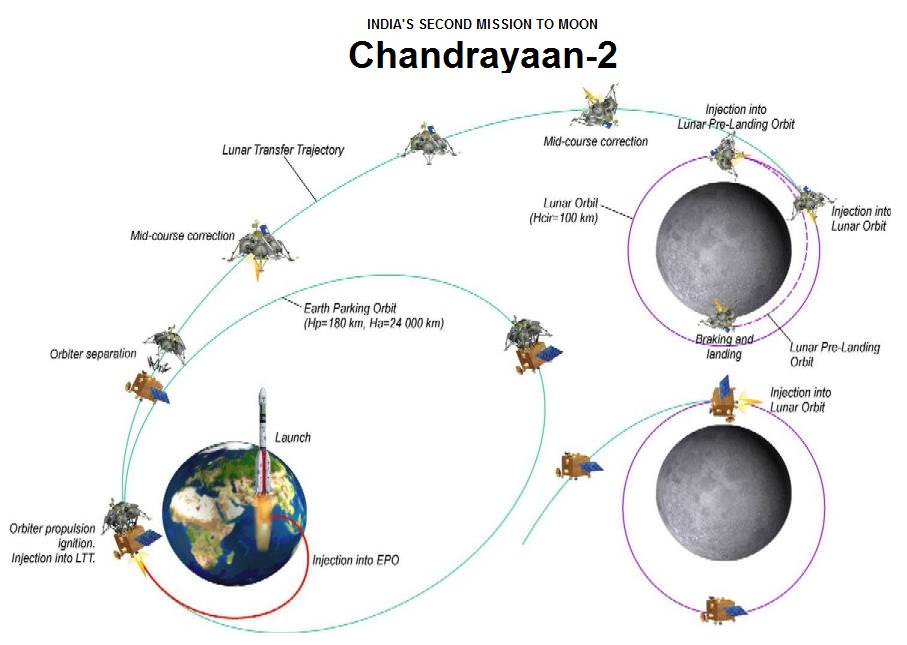[/caption]
Seven instruments will be aboard India’s second unmanned mission to the Moon, Chandrayaan-2, the Indian Space Research Organization (ISRO) announced today. The mission, which is a cooperative effort between ISRO and the Russian Federal Space Agency, will include an orbiter, a lander and a rover, which officials hope will launch in 2013. The instruments will study the Moon in a variety of wavelengths, and there will be five instruments on the orbiter and two on the rover. They include:
For the orbiter:
1. Large Area Soft X-ray Spectrometer (CLASS) and Solar X-ray monitor (XSM) for mapping major elements present on the lunar surface.
2. L and S band Synthetic Aperture Radar (SAR), which will probe the first few tens of meters of the lunar surface for the presence of different constituents, including water ice. SAR is expected to provide further evidence confirming the presence of water ice below the permanently shadowed regions of the Moon.
3. Imaging IR Spectrometer (IIRS) will map the lunar surface over a wide wavelength range for the study of minerals, water molecules and hydroxyl present.
4. Neutral Mass Spectrometer (ChACE-2) to carry out a detailed study of the lunar exosphere.
5. Terrain Mapping Camera-2 (TMC-2)to create a three-dimensional map essential for studying the lunar mineralogy and geology.
For the rover:
1. Laser induced Breakdown Spectroscope (LIBS).
2. Alpha Particle Induced X-ray Spectroscope (APIXS).
Both those instruments are expected to carry out elemental analysis of the lunar surface near the landing site.
ISRO didn’t rule out adding addition payloads later “if possible within the mission constraints,” they said in a statement.
The lander is being built by Russia, while the orbiter and rover are being built by ISRO.
Chandrayaan-2 spacecraft weighs about 2,650 kg at lift-off of which the orbiter’s weight is about 1,400 kg and lander about 1,250 kg. It will be launched onboard a Geosynchronous Satellite Launch Vehicle (GSLV) from the Satish Dhawan Space Centre, in India.
Chandrayaan-1 was an extremely successful mission that lasted 10 –months until the orbiter experienced communications and navigation problems in August 2009, abruptly ending the mission. Data from the 11 instruments on Chandrayaan-1 are still being analyzed, but have already contributed to finding water and hydroxyl across the Moon’s surface and water ice in craters on the lunar poles.
Source: The Times of India


Is the rover gonna be named Leika?
what about the design of Rover and it’s robustness to land tn lunar surface.It’s mobility in lunar surface has also to be addressed.Best of luck.
“what about the design of Rover…..”
The Russians might incorporate some design ideas from previous Soviet lunar rovers: http://en.wikipedia.org/wiki/Lunokhod_program